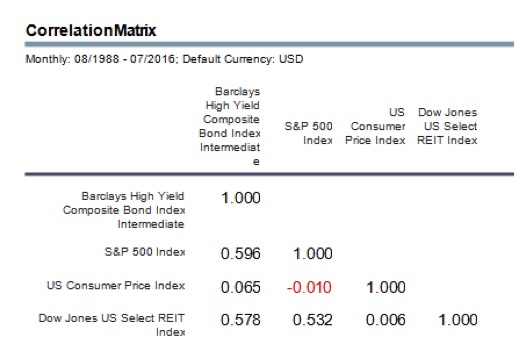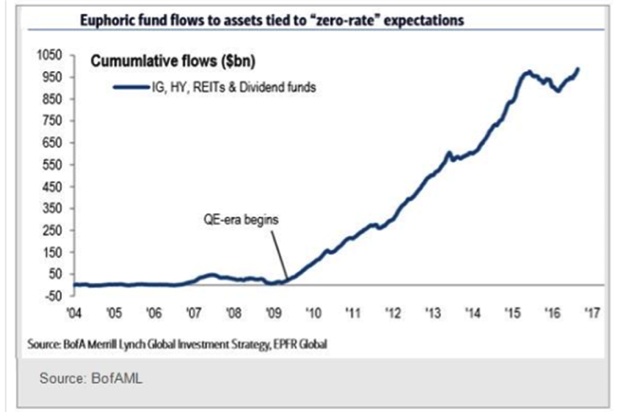Managing Risk When Investing for Income
You might think bonds and real estate investments are always safer than stocks, but they come with their own set of risks.

Most people don't enjoy prolonging time spent in the car, so they search for shortcuts in an effort to arrive at their destination sooner. However, often those shortcuts can backfire—drivers can get lost, wait in traffic or run into a variety of other problems that make them wish they stuck with their original route.
This analogy relates to investors' search for income. In today's low interest rate environment, investors search far and wide for decent yields, trying to earn money faster and arrive at their financial goals sooner. However, investors should understand the risks associated with investing in bonds and high-yield investments.
Let's review some important considerations when deciding how bonds and high-yield investments fit into your overall investment strategy.
From just $107.88 $24.99 for Kiplinger Personal Finance
Be a smarter, better informed investor.

Sign up for Kiplinger’s Free Newsletters
Profit and prosper with the best of expert advice on investing, taxes, retirement, personal finance and more - straight to your e-mail.
Profit and prosper with the best of expert advice - straight to your e-mail.
Know What You Own
Investors should be properly rewarded through returns for the risks they assume. Skittish about stock market exposure but dissatisfied with investment-grade bond returns post-financial crisis, many investors have increasingly turned to high-yield bonds and real estate investment trusts (REITs). Investors rationalize that choice by falsely believing that while high-yield bonds and real estate are riskier than investment-grade corporate bonds and Treasuries, they are at least avoiding the higher risks associated with equities.
Unbeknownst to many people, high-yield bonds and REITs actually have volatility that mirrors that of the stock market at times. The movement of their prices in the same direction is called "correlation."
Re-visiting our driving theme, think of correlation like this: Imagine two delivery trucks traveling down the highway. If both trucks are moving in the same direction all of the time, their movements are 100% correlated. If the trucks are moving in the same direction only half of the time, their movements are 50% correlated.
High-yield bonds and REITS both have meaningful correlation with Standard & Poor's 500-stock index, as illustrated in the chart below. High-yield bond investment returns are correlated to S&P 500 returns about 60% of the time. REIT returns are correlated to the S&P 500 about 53% of the time. This means that high-yield bonds and REITs move up and down in tandem with the S&P 500 more than half of the time. That's no small amount of stock market risk for assets that historically return less than stocks on average.

Don't Overpay
No one enjoys feeling like they overpaid for an asset. However, yield-focused investors are often overlooking high prices in their search for income. Since the financial crisis, cumulative flows to mutual funds invested in investment-grade bonds, high-yield bonds, REITs and dividend funds have soared, likely because investors have been assuming that low interest rates will continue. The chart below illustrates the amount of dollars these funds have attracted.

Don't forget that the prices of bonds and other investments that behave like bonds generally move in the opposite direction of interest rates. So when rates rise, as they have since this year's U.S. presidential election, yield-focused assets bought at record prices stand to see those prices drop in ways that may leave investors feeling burned.
Seek Real (After-Inflation) Returns
Yield-generating investments may fail to keep pace with inflation over time. Current levels of inflation remain low, about 2.20% as of October 2016, compared with historical inflation of about 3.71% from 1958 to October 2016, according to historical data from Dimensional Funds Advisors (DFA). However, if inflation begins to run higher than current interest rates, bond investors could be left in a lurch. Rising inflation and subsequent rising interest rates could produce negative real returns. This result is not unusual, as over thirty-year rolling periods, bonds of all stripes fail to keep pace with inflation about one-third of the time on average, according to DFA data. Keep inflation in mind and properly account for it so that your hard-earned returns do not become consumed.
No asset is risk-free. Every investment carries its own unique risks, and investors should account for those risks and manage them. Traveling too far down the road to avoid one risk (often stock market risk) can magnify other risks and mask where your actual risk exposure lies. Safe travels on the road to capturing real returns and achieving your financial goals!
A licensed attorney, Jared Snider serves as a senior wealth adviser at Exencial Wealth Advisors in Oklahoma City. He strives to help individuals and families attain their goals, manage risk and cultivate peace of mind.
Profit and prosper with the best of Kiplinger's advice on investing, taxes, retirement, personal finance and much more. Delivered daily. Enter your email in the box and click Sign Me Up.

Jared Snider is a licensed attorney and serves as a senior wealth adviser at Exencial Wealth Advisors in Oklahoma City. He guides families, business owners and professionals in goal-based investing, planning and risk management. By creating solutions with clear action steps and follow-through, he strives to create peace of mind and confidence for his clients. Snider earned his Juris Doctor with highest honors from The University of Tulsa College of Law. Prior to joining Exencial, he practiced estate planning and real estate law. He is a member of Exencial's Investment Committee.
-
 How Prepaid Verizon Phone Service Works and When It's a Smart Choice
How Prepaid Verizon Phone Service Works and When It's a Smart ChoiceExplore the differences between Verizon Prepaid and Verizon Postpaid plans—costs, perks, flexibility, and when going prepaid makes sense.
-
 Try This One-Minute Test to Uncover Hidden Health Risks
Try This One-Minute Test to Uncover Hidden Health RisksFinding out this little-known fact about your body could reveal your risk of heart disease and more. It's a simple, free check for healthy aging.
-
 Social Security Wisdom From a Financial Adviser Receiving Benefits Himself
Social Security Wisdom From a Financial Adviser Receiving Benefits HimselfYou don't know what you don't know, and with Social Security, that can be a costly problem for retirees — one that can last a lifetime.
-
 Take It From a Tax Expert: The True Measure of Your Retirement Readiness Isn't the Size of Your Nest Egg
Take It From a Tax Expert: The True Measure of Your Retirement Readiness Isn't the Size of Your Nest EggA sizable nest egg is a good start, but your plan should include two to five years of basic expenses in conservative, liquid accounts as a buffer against market volatility, inflation and taxes.
-
 New Opportunity Zone Rules Triple Tax Benefits for Rural Investments: Here's Your 2027 Strategy
New Opportunity Zone Rules Triple Tax Benefits for Rural Investments: Here's Your 2027 StrategyNew IRS guidance just reshaped the opportunity zone landscape for 2027. Here's what high-net-worth investors need to know about the enhanced rural benefits.
-
 The OBBB Ushers in a New Era of Energy Investing: What You Need to Know About Tax Breaks and More
The OBBB Ushers in a New Era of Energy Investing: What You Need to Know About Tax Breaks and MoreThe new tax law has changed the energy investing landscape with expanded incentives and permanent tax benefits for oil and gas production.
-
 Ten Ways Family Offices Can Build Resilience in a Volatile World
Ten Ways Family Offices Can Build Resilience in a Volatile WorldFamily offices are shifting their global investment priorities and goals in the face of uncertainty, volatile markets and the influence of younger generations.
-
 Should Your Brokerage Firm Be Your Bookie? A Financial Professional Weighs In
Should Your Brokerage Firm Be Your Bookie? A Financial Professional Weighs InSome brokerage firms are promoting 'event contracts,' which are essentially yes-or-no wagers, blurring the lines between investing and gambling.
-
 Supermarkets Have Become a Pickpockets' Paradise: How to Avoid Falling Victim
Supermarkets Have Become a Pickpockets' Paradise: How to Avoid Falling VictimSome stores regularly rearrange inventory with the aim of increasing purchases, and they're creating opportunities for thieves to steal from customers.
-
 I'm a Wealth Adviser: These Are the Pros and Cons of Alternative Investments in Workplace Retirement Accounts
I'm a Wealth Adviser: These Are the Pros and Cons of Alternative Investments in Workplace Retirement AccountsWhile alternatives offer diversification and higher potential returns, including them in your workplace retirement plan would require careful consideration.